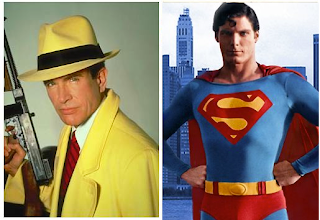The first is his mission: the character must act selflessly, represent the good of mankind and make any and all attempts to do away with evil. More importantly, his (or her) cause may not in any way reflect a personal gain – these actions are purely to better society. Second, is their power. Superheroes are given immense strength, mystical qualities, or flying capabilities to name a few. These traits are what separate them from ordinary men, and allow them to take up their mission. Powers are arguably the most important part of the classification of a superhero. The third component that Coogan outlines is the superhero’s identities. They almost always carry a sense of duality – an ordinary and inconspicuous character who blends into society, and an improved, usually costume-clad superhero alter ego. Which brings about the other element to superhero identity, the costume.
Though Coogan makes mention of other qualifying ingredients to a superhero and his story, he outlines the use of these three when testing a character to see if they fit the mold. This week’s film, Dick Tracy, does an excellent job of convoluting ones attempts to place him in the superhero mold. We can say that he is, in fact, a superhero… but how do we know?
Firstly, his costume is a far cry from the spandex/cape combo we’re used to seeing on most of his well-known counterparts. However, Coogan makes reference to Scott McCloud’s book Understanding Comics, in which McCloud discusses how iconography can be amplified through simplification. The simple colours and design of the theatrical costuming in the film definitely do not go unnoticed. Tracy’s fedora and suit are a costume all their own. His one-sided identity is also somewhat confusing – he lacks the alter-ego persona we’re so used to seeing.
Another somewhat confusing notion is that Tracy does not embody any of the specific powers of x-ray vision, flight, or superhuman strength that we’re used to seeing. He does, however, have his determination. In a strange sort of genre overlap, his “powers” are seemingly employing the use of spy-like tools to perform his detective duties. Could these be his superhero powers?
The most appropriate of the categories is the third, his mission. Dick Tracy undoubtedly fits the man on a mission cast. His altruistic fight against evil in the city certainly rests him with his superhero foils for this portion of the classification. Giving everything he’s got, putting himself on the line, even coming close to losing the love of his life in the film, he does whatever it takes to save the day, refusing a life of normalcy and being confined to a “desk job”.
After review of the classification of a superhero, Dick Tracy sure seems like one of a kind. Is he a “superhero” by an audiences classical standards? Perhaps not. A superhero as defined by Coogan’s definition? Slightly atypical, but definitely a man on a mission.


No comments:
Post a Comment